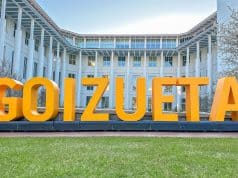The following editorial was written by Goizueta’s Assistant Professor of Organization & Management Andrea Dittman and coauthor Nour Kteily, professor of management & organizations and co-director of the Dispute Resolution Research Center at the Kellogg School of Management.
What’s a human life worth? In the days and weeks since October 7, it has often felt like very little. But amid all the death and destruction, both sides have been forced to answer this question more precisely. The taking of Israeli hostages by Hamas and the swelling of Israeli jails with Palestinians has put prisoner swaps atop the global agenda—meaning both sides must essentially “price” the value of their group members’ lives.
Early into this latest conflagration, Hamas leader Yahya Sinwar said the group would be willing to release all Israeli captives (approximately 240, including both soldiers and civilians) in exchange for the release of every Palestinian in Israeli custody (estimates range as high as 10,000 prisoners). While thus far rejecting this so-called “all-for-all” formula, Israel has also stated its desire to get as many of their people back as they can, with Israeli Rear Admiral Daniel Hagari stating, “We insist on getting the maximum possible. It’s been that way every day and also today.”
On November 21st, both sides ultimately settled, at least for now, on a more limited prisoner exchange. Amid a temporary week-long ceasefire, Israel released 240 Palestinian women and children in exchange for 81 Israeli women and children (Hamas separately released 23 Thai nationals and one Filipino). Hamas clarified that this 3:1 ratio would only apply to civilian women and children, and that soldiers would ‘cost’ substantially more. In 2011, Hamas and Israel agreed to a prisoner swap in which 1,027 Palestinian and Arab-Israeli prisoners were exchanged for a single Israeli soldier, Gilad Shalit.
The ratio of these exchanges may appear to be strategically favorable to the Palestinian side. And there is an obvious logic to groups trying to secure the release of as many of their prisoners as possible. But getting more of your group’s people back than you give up also means implicitly accepting that each one of the other group’s lives is “worth” more than one of yours. And this subtle signal, our research suggests, can involve significant hidden costs for those who “get more for less.”
Across a series of experiments we examined how people perceive lopsided prisoner exchanges. Our studies consisted of lopsided swaps both in the context of real-world conflicts (e.g., U.S.-Iran exchanges) and between fictional groups about which perceivers did not have pre-existing attitudes. On the one hand, pushing to get more of your people back for fewer of theirs could convey your commitment to the value and well-being of your group’s members. But on the other hand, agreeing to the “better” end of a lopsided trade could make others think you accept the diminished worth of each of your people’s lives relative to your adversaries’.
In one prototypical study, U.S. perceivers read one of two versions of a purportedly real news article about a prisoner exchange that was being considered by the U.S. and Iran. The articles were identical, except for the ratio of prisoners to be exchanged. In one version, the article stated that the swap would be equal: one U.S. prisoner for one Iranian prisoner. In the other version, the ratio was instead one U.S. prisoner in exchange for 20 Iranian prisoners. When perceivers were exposed to this lopsided swap agreement, they believed that Iran had lower self-worth than when the ratio was equal, and, as a consequence, they afforded the Iranian outgroup less respect.
Indeed, across our studies, we found that when groups sought to get “better” deals by pushing to get back more of their prisoners for the release of just one of the other sides’, people perceived that these groups had lower (vs. higher) self-worth. At least in the context of our studies, perceivers appeared to be more swayed by the uneven ratio of the trade than by the effort to secure the return of more of one’s prisoners. The same was true when groups instead drove down the ‘price’ paid to return one of their captives: extracting strategic value took a toll on the perceived value of the group’s lives.
Our studies also showed that being seen to have low self-worth can spark a chain of negative consequences: Perceivers who, as a result of a lopsided trade, came to believe that the group who got more back had lower self-worth also themselves came to respect that group less and say it was more acceptable to treat that group aggressively. Of note, these effects occurred whether perceivers themselves belonged to one of the groups they read about or belonged to a disinterested third party.
Blatant forms of dehumanization have been on stark display in recent weeks, with even high-ranking Israeli officials variously referring to Palestinians using terms like “savages”, “animals,” and “children of darkness.” And prior research documents how blatant dehumanization, including in the Israeli-Palestinian context, can contribute to intergroup aggression. But our results highlight another—more subtle—pathway by which we can come to see some groups’ lives as less worthy than others: inadvertent signals they send about their own self-worth. And even subtly overlooking the value of group lives matters, potentially allowing us to more easily tolerate the so-called “collateral damage” that war frequently involves.
When groups—even those relatively lacking in power, like the Palestinians—agree to trade more of their people for fewer of the other side’s, it can make outsiders—even those halfway around the world—perceive that they think less of themselves and come to think less of them, too. In a now-viral clip, Kay Burney, a Sky News presenter, explicitly identified the logic underlying our results: she asked an Israeli spokesperson whether agreeing to the 3:1 ratio implied that Israel thought Palestinian lives were worth less than Israeli lives. Indeed, it’s possible that exposure to the 3:1 swaps may have compounded Americans’ implicit tendency to conceive of Arabs and Muslims as less than fully human.
But there may be ways to circumvent this perception by intentionally affirming one’s equal worth even when engaging in numerically lopsided trades. Although Hamas currently holds many fewer Israelis than Israel does Palestinians, the “all for all” framing highlights one possible way to affirm equal worth: Framing a lopsided swap as “all for all” centers more attention on group equality—each side similarly giving up “all” those they hold—rather than on the underlying lopsided ratio.
Of note, it’s not just prisoner exchanges that send signals about how much a group values its own. Our work also revealed that undertaking costly rescue efforts—even numerically irrational ones—can signal high self-worth. In one study, participants who read about a group that chose to undertake a rescue effort to save a single hostage that had a 40% chance of killing a group of 5 rescuers (i.e., an expected value of 2 lives lost while saving 1) came to see that group as having higher self-worth than a group that decided against the risky mission (a choice that would ultimately save a greater number of lives).
It’s clear that perceivers do not make judgments about how groups value their lives—and how much they should value the lives of those groups in turn—solely based on prisoner swaps or rescue missions. And this is particularly true in a context as polarizing as the Israeli-Palestinian conflict. How Hamas and Israel conduct themselves in waging their conflict is likely to have a much larger effect. Still, as the Israel-Hamas war rages on with no clear end in sight, it’s critical for all of us to recognize the subtle—and sometimes paradoxical—cues that influence how we judge whose lives do and do not matter.
Goizueta faculty apply their expertise and knowledge to solving problems that society—and the world—face. Learn more about faculty research at Goizueta.











